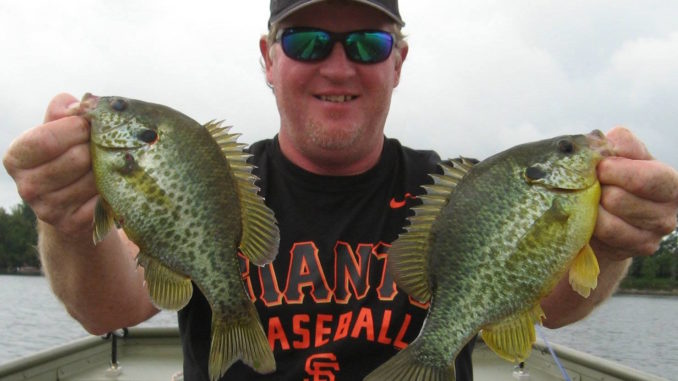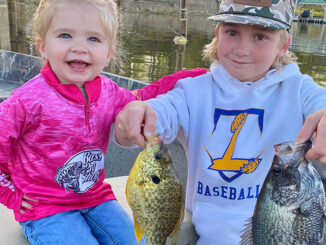
These tips will help you limit out more quickly
The shellcracker bite has been on fire at Santee for the past couple of weeks, and while plenty of anglers are catching their share of them, those who follow a few tips are having the best luck.
Capt. Rob Bennett of Lowcountry Inshore Charters spends most of his days fishing for inshore and offshore species off the coast of Edisto, but this time of year, he said the shellcracker bite is too hot to ignore.
Bennett said one of the main ingredients to filling a cooler up with these feisty panfish is a small johnboat.
“You’ve really got to get into the cypress trees and work your way through narrow openings between tree branches and bushes, so a small johnboat is a must,” he said.
Away from the banks, trees stand in the water, forming a line that looks like an inviting place to toss a live worm, and while anglers can certainly catch shellcrackers there, Bennett said the trick to getting your limit quickly is to go into those trees, and fish in about 2 feet of water.
“You can see every fish in there. The water is that clear and that shallow. You can see beds everywhere. And while you’re just getting in there, if you can smell the bream, you’re in the right spot,” said Bennett (843-367-3777).
These fish have a strong preference for worms, and Bennett said red wigglers are his go-to bait, and the best tactic is to fish them on the bottom while using a cork. He uses a number 6 hook.
“You want the worm on the bottom, but having a cork on works as a good strike indicator, and can help keep you from getting hung up. The fish really want to see that worm squirming around, so resist the urge to thread them onto the hook or to run the hook through the worm multiple times. Just hook it once, right through the top, or head of the worm, which leaves the worm’s body free to wiggle. The shellcrackers just eat it up,” he said.
One thing Bennett has noticed about this technique is that it seems to catch more big fish than little fish.
“Almost all the fish we’ve been catching this way ore big ones. They’re a pound or bigger,” he said.
Because the water is so shallow and squeezing through the trees can be noisy, Bennett said it’s sometimes common to see whole beds of shellcrackers scatter, but he said anglers shouldn’t worry, because the fish will come back after a minute or two.



